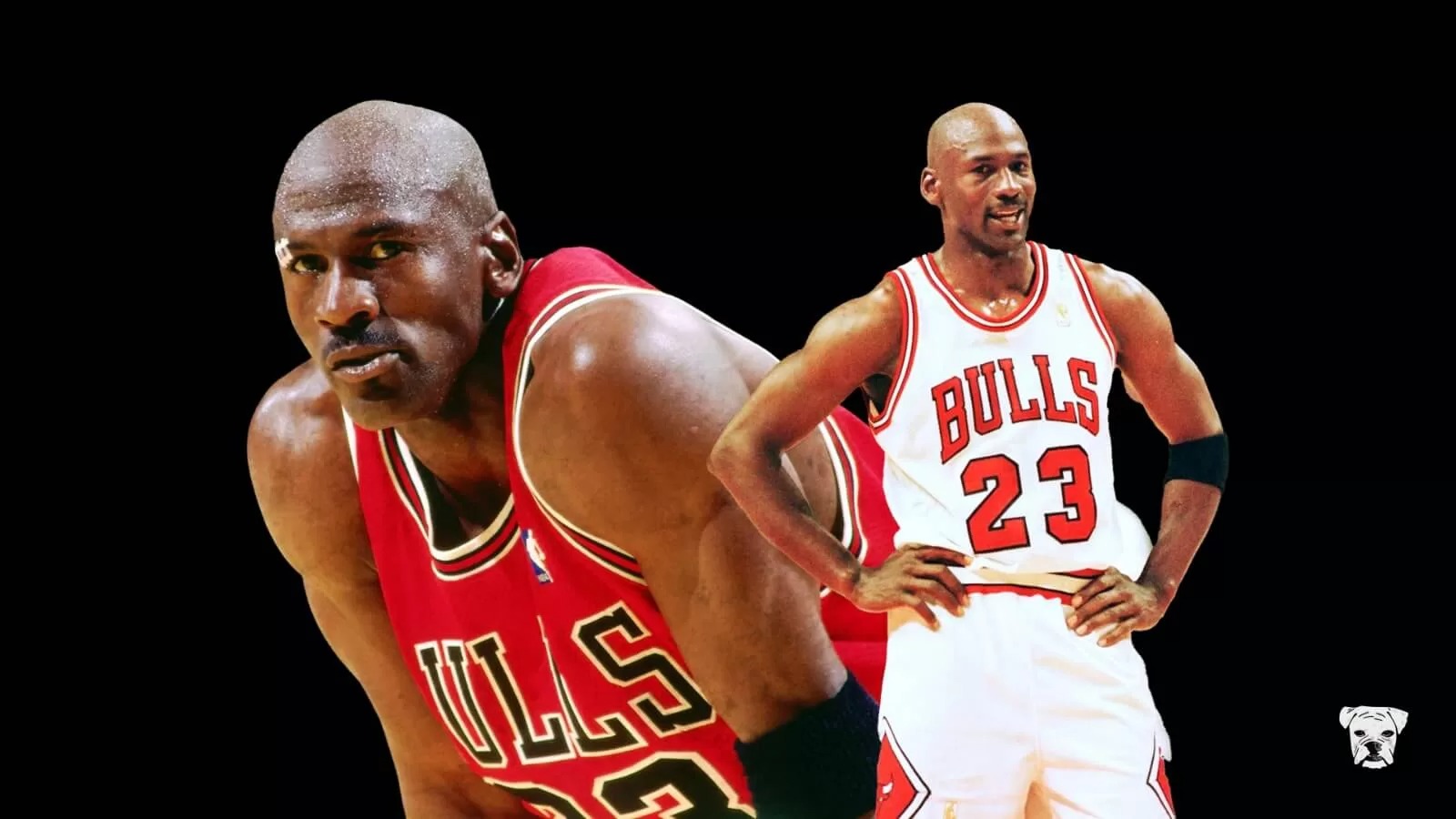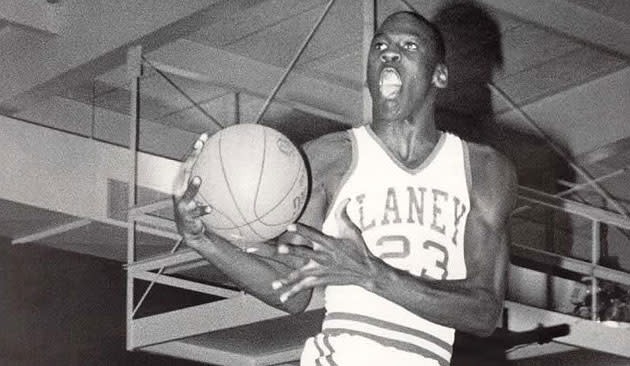If you’re an NBA fan, you’ve heard the story:
Michael Jordan, the greatest basketball player in history, got cut from the varsity team in high school.
Over the years, people have disputed the legitimacy of the report. Some call it a myth, while others claim there’s more to the tale.
But what’s the truth?
I spent hours digging through old reports, newspaper clippings, and interviews to find out.
Michael Jeffrey Jordan went to Emsley A. Laney High School in Wilmington, North Carolina.
Like other high school boys, he was shy, soft-spoken, and had trouble with the ladies.

“It sounds sad, but it’s true,” Jordan said in a 1987 interview with 60 Minutes.
“A lot of guys picked on me, and they would do it in front of the girls. They would joke about my haircut, and the way I played with my tongue out…the girls would laugh at that, and right then I was dead. I couldn’t get a date with anybody.”
15-year-old Michael Jordan tried out for the varsity basketball team as a sophomore.
Only 5’10” at the time, he was one of 50 boys competing for 15 spots on the varsity roster.
The Laney Bucs were coming off a playoff season and already had 10 returning seniors who were all but guaranteed a spot.
That meant the newbies had to duke it out for the 5 slots left.
“I wasn’t that good,” Jordan told David Letterman in 1989.
“I really couldn’t make a layup and chew gum at the same time. But, you know, I thought I should’ve been on the team though.”
Still going through a growth spurt, Michael’s ability didn’t catch up with his height.
“I was kind of clumsy,” he said in 1997. “I knew how to play the game, but I just didn’t know how to play the game to play at the highest level.”
At the end of tryouts, the coaches emerged with two handwritten lists: one for the varsity roster and another for the JV roster.
Though the same gym would eventually be renamed the Michael J. Jordan Gymnasium, the teenager was just another one of the guys back then.

As the players swarmed toward the wall in the locker room, Jordan scanned the varsity list and didn’t see his name.
“I looked and looked for my name,” he told the Chicago Tribune in 1991. “It was almost as if I thought that if I didn’t stop looking, it would be there.”
His eyes shifted to the JV list, and there it was.
Reality hit him like a slap in the face.
He got cut from the varsity and was relegated to the JV squad.
“It really hurt,” he said.
“I thought I worked hard to get to the place that I was – and to have an opportunity to make the varsity – and when I got cut, I was really hurt. But I think that just made my determination a lot stronger.”
What stung even more was seeing the name of his friend – fellow sophomore LeRoy Jenkins – on the varsity list.
The Bucs were lacking in size, and Jenkins was 6’7”. So he grabbed the final available roster spot ahead of Jordan, who the coaches felt needed more time to develop.
“It was embarrassing not making the team,” Michael said.

After processing the situation, he still had a whole day of school in front of him.
“I went through the day numb. I sat through my classes. I had to wait until after school to go home.”
When he finally got back, Jordan locked himself in his room and cried.
“For a while, I couldn’t stop,” he said.
“Even though there was no one else home at the time, I kept the door shut. It was important to me that no one hear me or see me.”
The now infamous roster decision was made by a 26-year-old head coach named Clifton “Pop” Herring. He was one of the youngest varsity coaches in the state of North Carolina.
According to a 2012 Sports Illustrated piece about Herring, “There was no doubt that Mike Jordan could handle the ball, but his shooting was merely good and his defense mediocre.”
“At least one assistant coach had never heard of him before that day.”
No coach could have predicted who this 15-year-old boy would become.
“Some people don’t remember high school was 10th through 12th grade back then,” said assistant coach Ron Coley.
At the time, Michael was a first-year player – one of many fighting for a place on the team.
From that perspective, putting him on JV to develop his game was the right move.
And it turned into a pretty good thing for him, too.
Later on, Michael Jordan said getting cut was “the best thing that happened” to him.

He used it as motivation.
“Whenever I was working out and got tired and figured I ought to stop, I’d close my eyes and see that list in the locker room without my name on it,” he told Newsweek.
“That usually got me going again.”
The 15-year-old kept growing and with an unmatched work ethic, he became the star of the JV team.
He had several 40-point performances and drew crowds that rivaled varsity playoff games.
The following summer, Michael grew 4 inches and worked out even harder. He made the varsity team and quickly became their best player.
“The next year,” Jordan said, “[Coach Pop Herring] picked me up every day at six o’clock and took me to the gym to help me work on my abilities.”
His senior year, he led Laney to a 19-4 record and capped off his high school career by being named a McDonald’s All-American.
After a decorated college career at UNC, he was selected 3rd overall in the 1984 NBA Draft.
Basketball fans know what happened next.
After six NBA championships, five MVP awards, and a list of accolades longer than a CVS receipt, Michael Jordan became known as the greatest basketball player of all time.
All the while, his old coach – Pop Herring – drew criticism from fans and media members who didn’t know the whole story.
Years later, Jordan made a powerful statement about the high school coach who handed him the biggest disappointment of his youth.
“I wouldn’t have been the basketball player I was, or the man I am, without Pop Herring pushing me to be my best.”